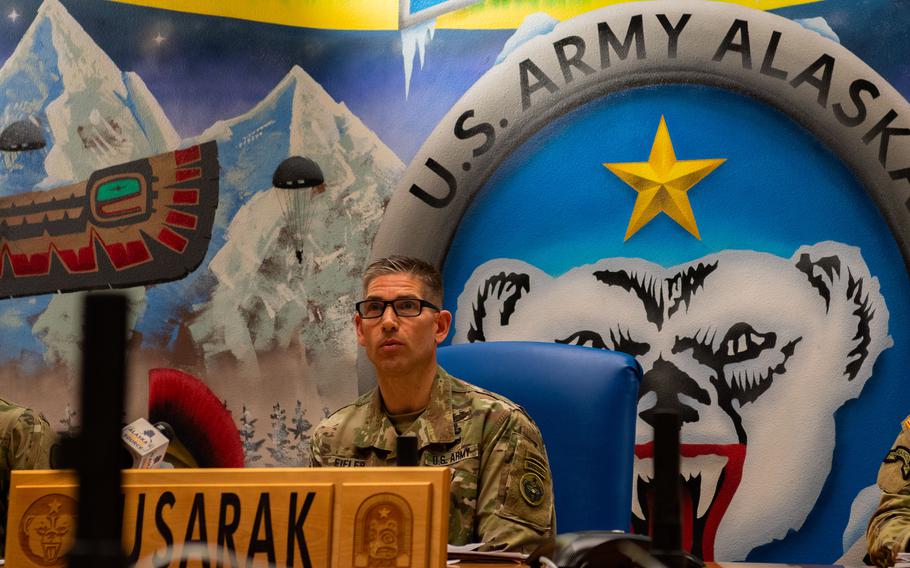
Maj. Gen. Bryan Eifler, commander of U.S. Army Alaska, speaks at Joint Base Elmendorf-Richardson, Alaska, Feb. 25, 2022, during a media roundtable about measures being taken in Alaska to prevent suicides by soldiers. (Justin Wynn/U.S. Air Force)
An independent review ordered this week by Defense Secretary Lloyd Austin will seek out ideas to stem the increasing number of suicides among soldiers stationed in Alaska and South Korea, as well as some stateside installations.
The review committee is expected to begin work by May with a report due before the end of the year, Pentagon press secretary John Kirby said during a news conference Tuesday.
Committee members will “visit multiple installations here at home and overseas,” he said.
The review, as ordered Tuesday in a memo by Austin that laid out its parametets, includes three installations in Alaska: the Army’s Fort Wainwright and Eielson Air Force Base in Fairbanks, and Joint Base Elmendorf-Richardson in Anchorage.
Camp Humphreys in South Korea, home to thousands of U.S. soldiers, is the sole overseas base that committee members will visit.
Also included in the review are Fort Campbell, Ky.; Camp Lejeune, N.C.; Nellis Air Force Base, Nev.; Naval Air Station North Island, Calif.; and the North Carolina National Guard.
A rising number of suicides has bedeviled the Army in Alaska since 2019, with a dramatic leap in 2021.
Seven soldiers died by suicide in the state in 2020, and last year that number jumped to 11 – a figure that does not include six soldier deaths still under investigation.
The commander of U.S. Army Alaska told reporters during a conference call last month that he had mandated wellness checks with behavioral health counselors for 100% of soldiers in his command.
Kirby told reporters that 580 service members died by suicide in 2020, a tally that includes reserve and National Guard troops. Full data for 2021 likely will not be available until this fall, but Austin “is not interested in waiting for the ‘21 data,” Kirby said.
“He's seen enough to know that we've got to do something different, that we've got to try to take additional and more creative action here.”
Austin was in Fairbanks last summer, where, among other topics, he talked with troops and commanders “about the challenges there with respect to mental health and suicide,” Kirby said.
Austin also had discussions with mental health experts in Alaska, who “walked him through some of the complexities they’ve seen” in regard to suicide and its prevention, Kirby said.
Austin came away from the talks with a firmer understanding that addressing stigma among troops about seeking help with mental health problems is a key to reducing suicides, he said.
A significant number of suicides by service members involve the use of a firearm, Kirby said.
Austin wants to “work with commanders on storage of the firearms in the home or on base and make sure we've got that well in hand,” he said.